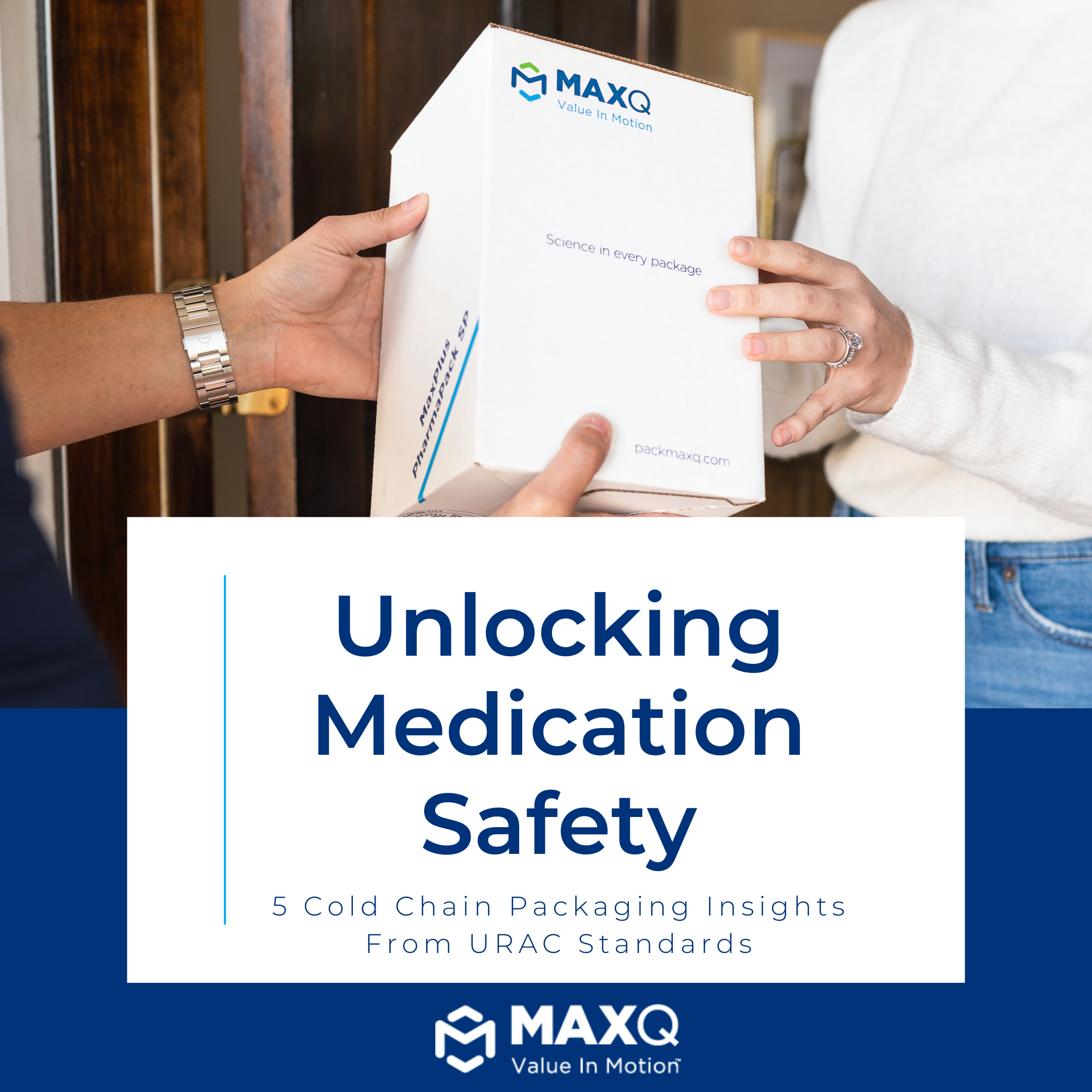Explore crucial insights from URAC 5.0 standards on cold chain packaging and medication distribution. Learn how to enhance patient safety and optimize specialty medication handling to ensure stability and reliability.
Written by Michael Becker –Pharma Cold Chain SME
OPTIMIZING MEDICATION DISTRIBUTION
An estimated 75% of the 7,000 prescription drugs in development fall under the category of specialty medications, while 60% of the anticipated 600 drugs set to gain FDA approval in 2022 are also specialty drugs. Projections suggest a staggering $310 billion will be spent on specialty drugs by 2030. However, challenges abound, with the US biopharma industry facing a $35 billion annual loss due to temperature excursions during logistics. With the introduction of the URAC Specialty Pharmacy 4.0 Standards, pharmacies were required to assess their medication distribution processes unlike ever before. Prior to this change, many specialty pharmacies opted to purchase the cheapest packaging materials they could find in the market with the expectation that these solutions would keep their lifesaving and expensive medications stable and secure in transit.


With a focus on patient safety, URAC introduced strict requirements under Pharmacy Operations (P-OPS) 8 that prompted pharmacies to establish robust procedures around the packaging and shipping process, conduct initial and ongoing package testing for all modes of transit, and establish a formalized review of shipping complaints. Unfortunately, many pharmacies across the country encountered concerning packaging performance issues with their refrigerated, room temperature, and frozen medications. With significant and prolonged temperature variations outside of acceptable ranges, pharmacies were forced to confront the fact that the critical medications that their patients rely on may not have been as safe as they originally thought.
Earlier this year, URAC introduced their Specialty Pharmacy 5.0 Standards. These enhanced requirements continue to put the focus on medication stability under the Medication Distribution Focus Area. For pharmacies, it is clear that this important issue requires both a higher level of packaging performance and a packaging solutions partner that has the expertise needed to help guide you through building a comprehensive distribution process that focuses on performance and patient safety.
Here are five key takeaways from the URAC Specialty Pharmacy 5.0 Standards:
- Due to the importance of these requirements and their potential impact on patient safety, URAC moved Distribution to its own Focus Area within the 5.0 Standards.
- Pharmacies are required to have evidence-based distribution criteria that define the appropriate temperature ranges and acceptable excursion ranges for medications. Evidence can be from resources such as USP 695, the World Health Organization, and pharmaceutical manufacturer guidelines.
- P-MD 1-2 outlines the requirements of packaging qualification testing. Pharmacies are required to complete these tests prior to using new packaging material or distribution procedures. Tests need to be completed with continuous monitoring devices for all temperature profiles, include multiple shipments for each packing and shipping procedure.
- Although pharmacies are required and responsible for completing these qualification tests, URAC permits them to partner with vendors such as MaxQ to design and implement their testing process.
- URAC has promoted “Distribution Auditing” in P-MD 1-4, which can include periodic/ongoing package testing, a review of pack outs that have been completed by team members and assessing package weights for consistency.

For a limited time, we welcome you to sign up for a FREE no obligation 30-minute consultation with one of our package experts to help you assess your distribution process as it relates to the URAC Specialty Pharmacy 5.0 Standards.
Submit a meeting request here!
Whether your pharmacy has URAC Accreditation, or if you are starting to pursue it for the first time, we offer high-performance MaxPlus PharmaPack SP products and the essential experience needed to help you design a distribution process that ensures the stability of critical and high-cost medications for the health and safety of your patients. Our solutions are qualified under the strictest standards for 36-48 hours, are compact and lightweight to help reduce your shipping costs by up to 50%, are environmentally friendly, and ship and store flat to enhance your storage capabilities.

ABOUT THE AUTHOR
Michael Becker has over ten years of experience in independent and health system specialty pharmacy buildouts with extensive expertise in the areas of quality and process improvement, specialty pharmacy accreditation, payor and manufacturer contracting, and pharmacy operations leadership. He resides in Syracuse, New York and is proud to be an ACHC Certified Consultant.

